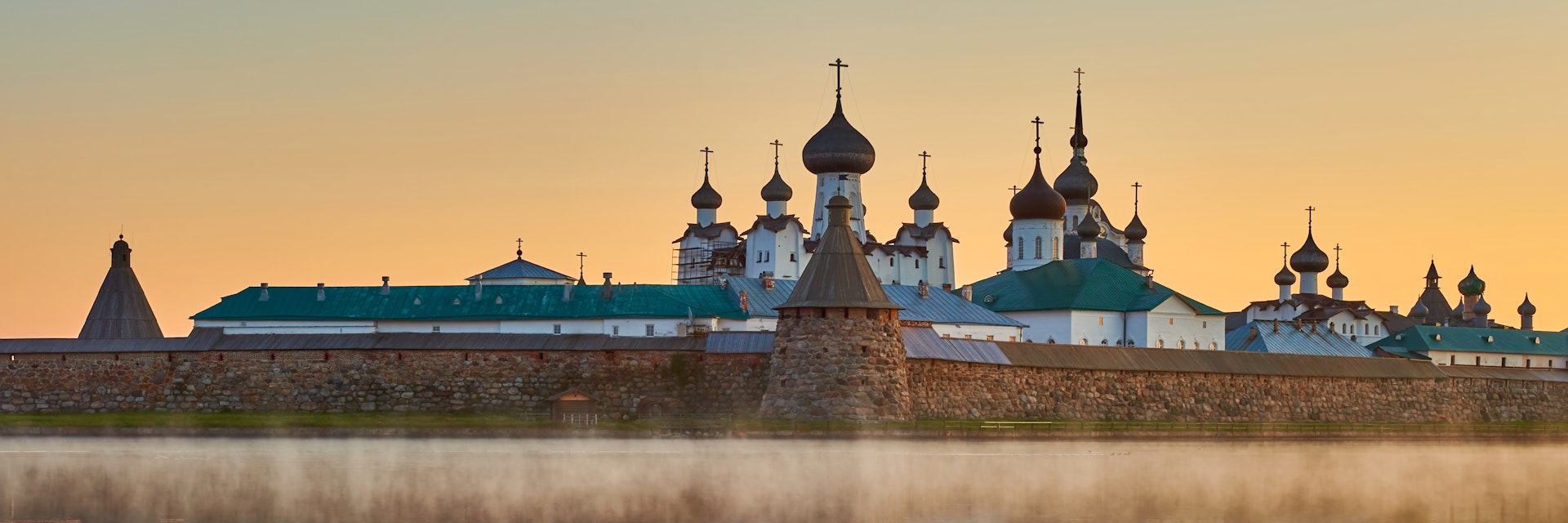This imposing, stone-walled monastery is the heart and soul of the Solovetsky Islands. Founded in 1429, it has played various roles throughout its existence: a hermit's retreat, a vibrant religious community, a rebel enclave that held out against the Patriarch of the Russian Orthodox Church, a fortress victorious against British warships, a gulag for the Soviet Union's damned and a museum. Revived post-perestroika, it flourishes once more as a spiritual institution.
The kremlin yard is contained within massive boulder-chunk walls with six sturdy fortress towers topped with conical wood-shingle roofs. These, along with a quivering flurry of church towers and domes, reflect magnificently in Svyatoe Lake. The centrepiece is the 1566 Transfiguration Cathedral (Спасо-Преображенский собор), with its blend of Pomorsky architecture, powerful foundations and whitewashed walls, clusters of domes covered in a dense carpet of wooden scales and a dazzling six-level iconostasis upstairs.
Upstairs is the vast dining room, connected to the rest of the complex by covered walkways. Next to it is the Assumption Church (Успенская церковь), a cavernous former refectory with sparse photo-history boards focusing especially on the 1992 return of the relics of monastery founders Saints Zosima, Savvaty and Herman.
The sacristy (ризница) upstairs was used to house the monastery's treasures, but many artefacts were carted off by the Bolsheviks and destroyed.
The tiny but magnificently mural-covered 1601 Annunciation Church (Благовещенская церковь) is entered through an unmarked door, one floor above the main gate.
The prison has been in use since the 16th century, first to house those who'd committed crimes against the faith and later to punish those who'd erred against the state. The harshest punishments (leg irons, dreadful food) was reserved for the 'secret' prisoners who arrived with nothing but accompanying papers stating the conditions in which they should be kept.
The monastery complex was heated using three powerful stoves and a series of heating vents that ran through the walls, with underfloor heating used to dry the grain before it was ground into flour. The 17th-century water mill, in turn, was powered by a network of canals that the industrious monks dug to connect the island's 500-something lakes.




